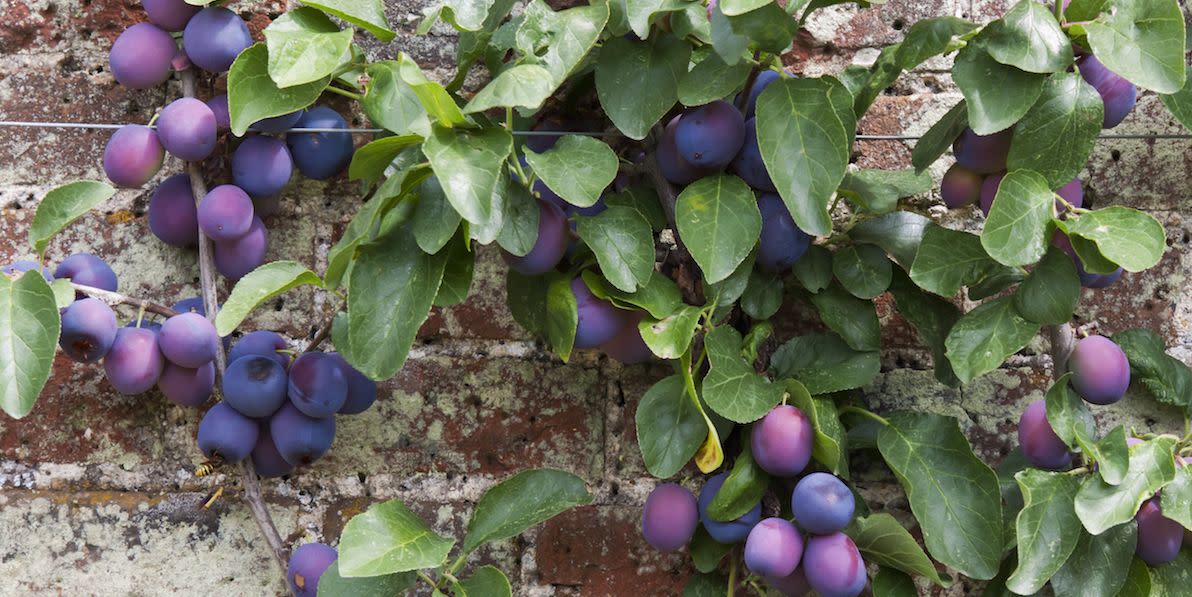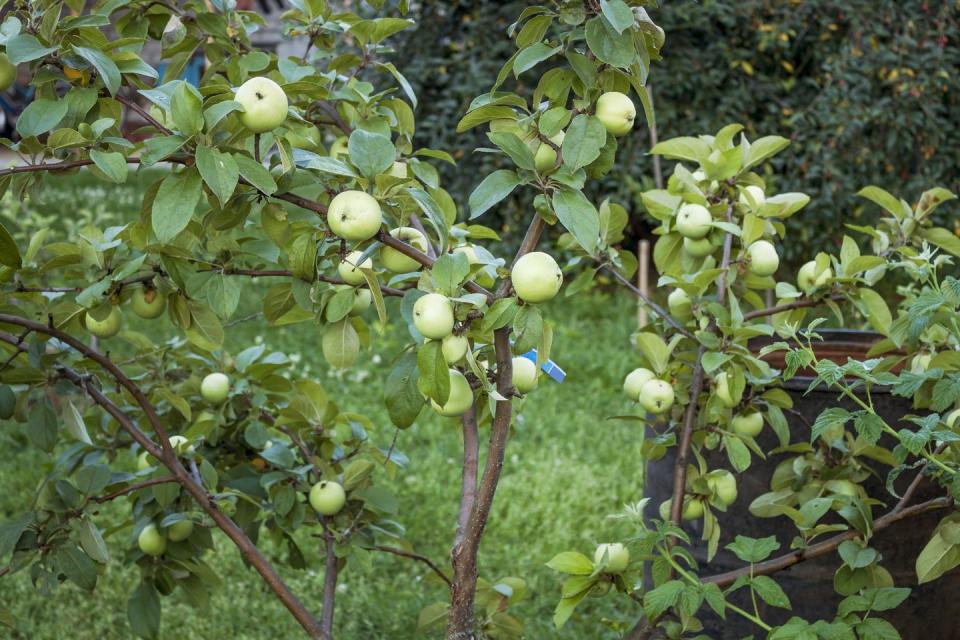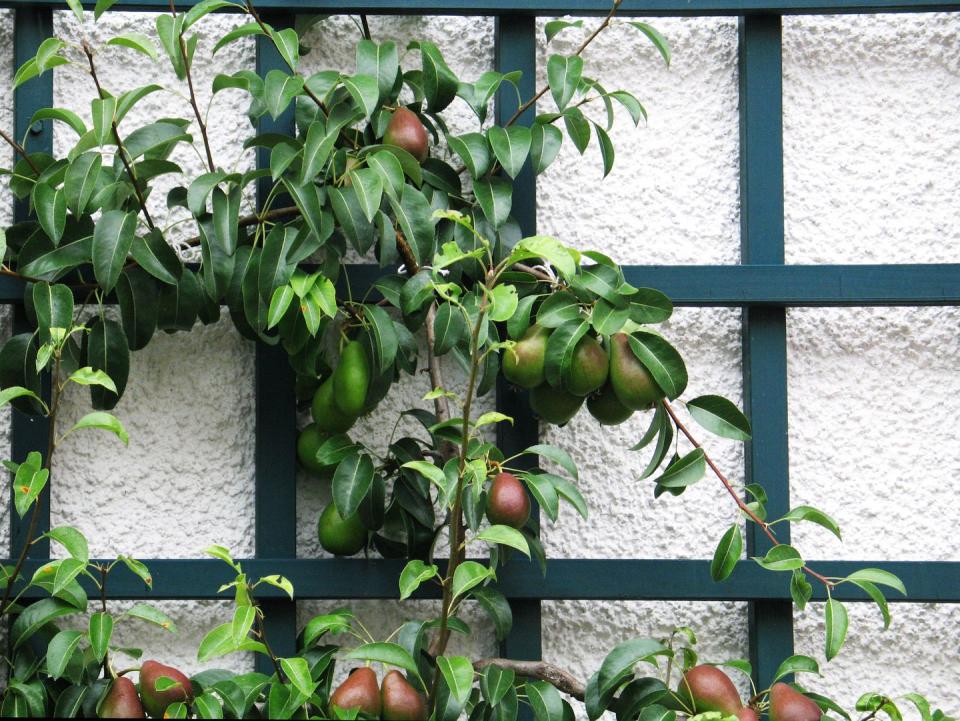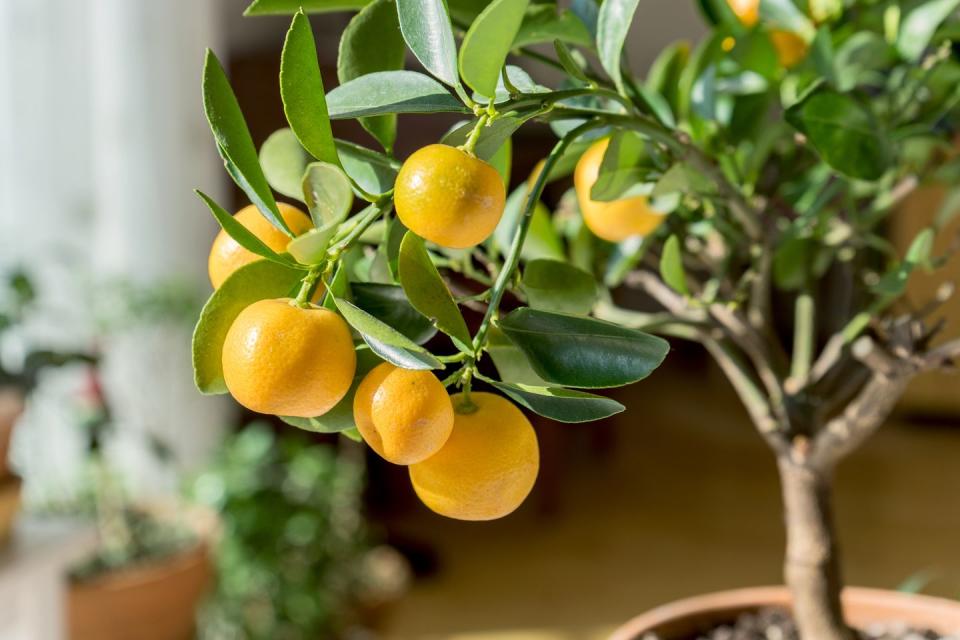The best fruit trees for small gardens

What are the best fruit trees for small gardens? Miniature and dwarf fruit trees are ideal for container growing on a balcony or patio, or for establishing in a small garden, either trained against a wall or freestanding in a lawn or border. And, as an added bonus, there's beautiful blossom in spring. All fruit trees love sunshine, and the more hours of sun they catch, the heavier the crop and sweeter the fruit.
At their best, miniature fruit trees yield up to 10kg of fruit annually, and reliably grow to about two metres high because their size is limited by dwarfing root stock. This culminates in high yields, borne within just a couple of years. All fruit trees are produced by grafting healthy shoots from a named variety onto roots, thereby combining the superior fruiting of one with the roots of another that’s vigorous and resilient.

Choosing a dwarf fruit tree
Since flavour is key, it’s worth buying named miniature varieties from a reputable supplier to ensure plants are correctly labelled and disease-free. If growing a single tree, choose a self-pollinating variety – this means that insects simply transfer pollen from one flower to another on the same tree in order for fruits to develop. For pollination to occur on a cross-pollinating tree, there must be at least one other tree of a different variety nearby – many apples and some plums and pears fall into this category, so always check before buying.
Where to position your fruit tree
Growing your own isn’t difficult, provided you follow a few simple guidelines concerning position, light, soil, watering and pest control. For best results, grow fruit trees in a sunny, sheltered spot. However, if the only space available is in partial shade, choose varieties that can cope, such as morello cherries (Prunus cerasus), 'Belle de Louvain' plums and the good-natured pear 'Beth'.
For full shade, you’ll have more success with fruiting bushes such as gooseberries or blackcurrants. Before planting a tree directly into the ground, ensure the soil is well-dug, weed-free, free-draining and rich in compost and organic matter to help retain moisture. Allow sufficient space, around 2.5 metres between each one. If planting in a lawn, dig a 90cm circular bed around the trunk to make mowing easier and protect the trunk from getting damaged. On windy sites, attach the tree to a sturdy stake, securing with plastic ties that allow for expansion. Insert a length of 40mm plastic pipe into the planting hole, so water travels directly to the roots – pour a little gravel into the pipe to prevent it clogging up with earth.
Choosing the right container
All miniatures grown in containers need a sizeable pot, at least 60cm tall. Add 4cm of gravel in the base to aid drainage and use a loam-based compost such as John Innes No 2. Regular feeding and watering encourages a good crop. In spring, feed with a fertiliser in preparation for the growing season, and mulch with compost or well-rotted manure to conserve moisture and suppress weeds. Above all, water so that the container never dries out. When a space is confined, check the fully mature height of a tree to ensure it won’t outgrow its allotted space.
How to train your fruit tree against a wall

Sunny walls provide space-saving support for fruit trees. Apples, pears, cherries and peaches grow well if trained flat against a warm, protected wall that will foster early ripening. To support the branches, run stainless-steel straining wires between vine eyes attached to the brickwork at 1.5-metre intervals. Fruit trees are available with one to three tiers already formed, ready to train to the wires, so you can attach branches as they spread.
Once established, it’s simple to keep trees pruned annually in late summer – the RHS offers advice on pruning, as well as the pests and diseases that may affect fruit trees. However, the best first line of defence lies in keeping trees healthy, feeding and watering plentifully, and pruning correctly.
What to grow
Apples are a welcome addition to any garden. Heritage varieties have some of the most exceptional flavours. Among the best known are 'Cox’s Orange Pippin' (introduced in 1825); 'Egremont Russet', loved for its dry, nutty flavour; 'Worcester Pearmain', which has pretty, bright red fruits, and a hint of strawberry when well-ripened; and 'James Grieve', a delicious variety that is used for eating and cooking. The popular 'Conference' pear (Pyrus communis) is one of the few varieties to be reliably self-pollinating. It matures late in the autumn, along with ‘Black Worcester’ and the old pear 'Beurre Hardy', a good cropper bearing fruits with a soft texture and fragrance akin to rose water.
Another major consideration is selecting crops that are ready to harvest at different times – whether it’s in early season (from late summer), middle (from mid-autumn) or late season. There are, for example, varieties of plum (Prunus domestica) that are ready to crop from August (the popular 'Victoria' plum), and others that last until October (the late dessert variety 'Anna Spath').
Indoor dwarf fruit trees

Among the most attractive dwarf fruit trees to grow indoors are members of the citrus family. Lemons, limes, oranges and mandarins have glossy leaves, scented flowers in spring and bear fruits from summer. Once mature, they vary in height between 1m and 2.5m so, if a tree is to go outside during the summer months, be sure to choose a shorter variety that can be easily moved. Other tender dwarf fruit trees that make lovely specimens for a conservatory include apricots, figs and peaches.
Follow House Beautiful on TikTok and Instagram.
You Might Also Like



